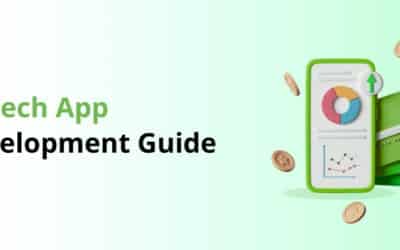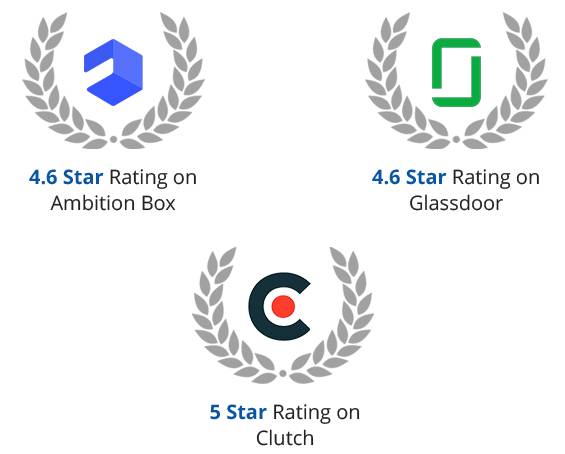Summary of the Article
Have a project in mind?
Schedule a CallWhy Your Fitness App Needs These 10 AI Features to Scale in 2025
Summary of the Article
The US fitness app market is crowded but most apps still miss what users now demand: smart personalization that evolves with their goals, bodies, and lives.
Basic tracking features? Table stakes. Preloaded workout plans? Everyone has them.What separates top-performing apps today is intelligence, the kind that adapts in real time, predicts fatigue, prevents drop-offs, and keeps users engaged day after day.
That’s what AI does.
Whether you’re building from scratch or looking to future-proof your existing platform, these 10 AI-powered features are more than upgrades. They’re the core of a high-retention, high-revenue fitness experience.
If you’re serious about fitness app development, or you’re figuring out how to create a fitness app that survives in the US market, this is what your roadmap should look like.
What Makes a Fitness App Stick? It’s Not Just Features, It’s the Right Ones.
Most fitness apps don’t fail because they lack features. They fail because they build the wrong ones or don’t build them to adapt.
What keeps users coming back isn’t just good design or a solid workout plan. It’s intelligent, responsive systems that meet people where they are, evolve with them, and quietly remove friction along the way.
That’s what these 10 AI-powered features are built to do, not just make your app functional, but make it essential.
Let’s break them down.
AI Health Coach
Most fitness apps still operate like printed workout manuals — static plans, set routines, and the same sequence for every user. That’s fine until… life happens. Someone gets sick, misses a few days, or just hits a wall. And now? They’re off-track, disengaged, and one step closer to deleting the app.
Rigid plans can’t flex. And users expect flexibility.
An AI health coach changes that. It reads real behavior, not just checkboxes and adjusts the program in real time. Workouts scale up or down. Recovery is prioritized when needed. Progression picks up where the user left off. No lectures, no starting over, just smart, ongoing support that feels personal without needing a person.
Why It Matters for Your Business
This isn’t just about smarter workouts, it’s about retention. Apps that feel reactive to real life keep people engaged longer. That means better day-30 retention, higher LTV, and fewer drop-offs. It also opens the door to premium upsells that actually deliver on their value.
Where It Shows Up in the Real World
- A user misses two workouts while traveling — the coach recalibrates their week without guilt-tripping them.
- After three nights of poor sleep, it shifts the plan to emphasize recovery, not intensity.
- A user comes back after a break and their plan picks up intelligently, not from square one.
Bottom Line: Most apps give users content. This gives them a reason to keep coming back — and that’s what scales.
Computer Vision For Form Correction
There’s no shortage of workout videos, rep counters, or form illustrations in fitness apps. But none of those help users in the moment when they’re halfway through a set and unknowingly wrecking their knees, back, or progress.
This is where most apps stop. And where yours can pull ahead.
Computer vision uses a device’s camera to analyze movement and posture in real time. No wearables, no sensors — just the user, their phone, and actual feedback that helps them move better and safer. It’s not just about tracking reps. It’s about improving them.
Why It Matters for Your Business
Form correction isn’t a “nice to have.” It’s trust-building. When users feel like your app is actually watching out for them, they come back. It also cuts down risk, increases confidence in home workouts, and adds a real layer of coaching without human intervention.
Bonus: it makes your app way harder to replicate.
Where It Shows Up in the Real World
- A user doing bodyweight squats sees a quick overlay pop up: “Shift weight back. Knees past toes.”
- During a shoulder press, the camera detects and flags asymmetrical form — something the user hadn’t noticed.
- A beginner gets real-time coaching mid-movement and doesn’t have to Google “how to fix my deadlift form” ever again.
Bottom Line: Reps without form are just numbers. This feature turns your app from a tracker into a real coach and that’s what builds retention.
Wearable Device AI Integration
Most users already track their health through smartwatches, fitness bands, or rings. But here’s the problem, most fitness apps treat that data like it doesn’t exist. That’s a missed opportunity.
When your app integrates with wearables and actually uses the data, it stops being a content platform and becomes a smart system. Heart rate, HRV, sleep quality, steps, exertion — all of it can shape what your app delivers next.
This isn’t just syncing. It’s intelligent, real-time adaptation based on the user’s lived metrics.
Why It Matters for Your Business
Wearable integration isn’t about checking a box, it’s about building a connected fitness ecosystem. Apps that pull in real-world data build deeper engagement, more accurate recommendations, and higher user loyalty. It also raises your ceiling: this is the foundation for smarter AI coaching, recovery protocols, and premium offerings down the line.
Where It Shows Up in the Real World
- A user’s HRV drops overnight, the app dials down today’s workout intensity without needing manual input.
- Sleep data shows poor REM and recovery, cardio is swapped for light movement and hydration prompts.
- The app notices consistently high strain from a wearable and suggests adding an active recovery day before fatigue leads to burnout.
Bottom Line: When your app speaks the same language as the user’s body, it doesn’t feel like tech. It feels like support and that’s what keeps people coming back.
Predictive Wellness Tracking
Most apps wait for users to burn out, plateau, or ghost the platform before reacting, if they react at all. But by then, it’s too late. The user’s already disengaged.
Predictive wellness tracking flips that model. By analyzing trends in energy, performance, sleep, and biometrics, your app can spot the early signs of fatigue, stress, or overtraining and adjust before the user even knows they need it.
That kind of timing feels like magic. But it’s just good data, used well.
Why It Matters for Your Business
This is about preemptive retention. When your app doesn’t just respond to user drop-off but actively prevents it, you move from reactive to strategic. It builds trust. It increases long-term engagement. And it gives you a serious edge in a space where most competitors still run on generic logic.
Where It Shows Up in the Real World
- A user’s training data starts slipping — the app recognizes the trend and shifts their schedule to prevent overload.
- Decreased HRV and missed sleep triggers a recommendation for lighter activity and focused recovery.
- The user doesn’t have to explain how they feel. The app already knows and acts.
Bottom Line: Don’t wait for users to crash. Predict, adapt, and keep them on the path — that’s what real value looks like.
Gamified AI Programs
Gamification is everywhere but in most fitness apps, it’s flat. Static badges, generic streaks, recycled challenges. It might look fun, but it wears off fast. Users don’t just want motivation. They want momentum that evolves.
That’s where AI changes the game. Literally.
With AI-driven gamification, your app can tailor challenges based on user behavior, performance, preferences, and even emotional patterns. The experience feels alive, not just reward-based, but responsive. And when progress feels personal, people stick with it.
Why It Matters for Your Business
Generic gamification can boost initial engagement. Smart gamification sustains it. When your app knows when to push, when to pause, and how to challenge users just enough, you create habit loops that drive daily active usage, retention, and community-based growth. Done right, it even fuels organic referrals.
Where It Shows Up in the Real World
- A user crushes their current plan, the app unlocks a new challenge tier tailored to their progress.
- Another user’s motivation dips — instead of a default badge, they’re offered a low-barrier “mini win” to get back on track.
- Group challenges auto-balance teams based on effort levels, keeping competition tight and fun.
Bottom Line: Gamification isn’t about bells and whistles. It’s about building consistency through smart, evolving motivation. If it doesn’t adapt, it won’t work and users will move on.
Metabolic Pattern Recognition
Here’s the uncomfortable truth: most apps treat users like they all burn calories, build muscle, and lose fat the same way. But metabolism isn’t one-size-fits-all — it’s personal, variable, and constantly shifting.
AI allows your app to detect metabolic patterns over time, how users respond to certain workouts, nutrition styles, training times, or recovery routines and personalize their experience accordingly.
This is what takes your app from generic to genuinely effective.
Why It Matters for Your Business
Real results are what drive retention, reviews, and referrals. When your app helps users understand how their body responds, not the average body — you build something people can’t get from a static plan. It opens the door to more accurate training, smarter nutrition paths, and personalized goal setting that actually works.
It’s also a natural bridge to premium coaching, nutrition plans, and deeper engagement.
Where It Shows Up in the Real World
- The app recognizes that a user performs better with fasted cardio and adjusts their weekly plan to take advantage.
- After a few weeks of logged meals and progress, the system flags that the user’s carb intake may be outpacing energy burn and suggests a shift.
- Evening workouts consistently yield lower recovery scores — the app nudges the user toward earlier sessions.
Bottom Line: If your app can’t adapt to the way a user’s body actually functions, you’re offering convenience — not results. AI fixes that.
AI for Sleep Coaching
Most fitness apps ignore sleep or treat it like a side note. That’s a miss. Poor sleep kills progress, increases injury risk, tanks motivation, and throws off everything from appetite to energy. If your app doesn’t account for it, it’s not really coaching. It’s guessing.
AI-powered sleep coaching pulls sleep data from wearables or manual logs and actually uses it to guide recovery, training intensity, and even timing. It connects the dots between rest and results and users notice the difference fast.
Why It Matters for Your Business
Sleep isn’t a vanity metric, it’s a performance driver. When your app shows users how their sleep quality impacts their output (and adjusts for it), you build trust. More importantly, you give people better results with less risk, which drives long-term engagement.
Sleep coaching also builds a strong case for premium insights and upsell services. It’s sticky and it scales.
Where It Shows Up in the Real World
- A user logs poor deep sleep three nights in a row — the app adjusts their next session from strength to mobility and rest-based recovery.
- Sleep/wake rhythm trends show evening workouts are wrecking sleep quality — the app nudges them to shift timing.
- Consistent high performance + solid sleep unlocks an advanced training phase because they’ve earned it, and the app knows it.
Bottom Line: Sleep is the most ignored variable in fitness apps — and one of the most powerful. If your app gets it right, everything else works better.

AI-Driven Injury Prevention
Injuries aren’t just physical setbacks, they’re one of the fastest ways to lose a user. Most apps only respond after something goes wrong. By then, the damage is done and often, so is the subscription.
AI gives you a smarter approach. By analyzing movement patterns, frequency, fatigue signals, and user history, your app can flag risk before it becomes pain. It’s quiet, subtle prevention but it has a massive impact.
Why It Matters for Your Business
Retention isn’t just about motivation, it’s about longevity. If your app helps users train smarter, not just harder, they stay longer. Fewer injuries mean fewer drop-offs, fewer negative reviews, and stronger word-of-mouth. It also shows your app doesn’t just care about performance, it cares about people.
Where It Shows Up in the Real World
- The app detects poor deadlift form during a strength session and pauses the set with corrective guidance.
- A user’s wearables show high strain and poor recovery — the app proactively suggests a deload week.
- Repeated movement asymmetry triggers a prompt to shift focus or consult a professional before it becomes a chronic issue.
Bottom Line: You don’t earn trust with features. You earn it by keeping users injury-free and progressing. That’s what this delivers.
Behavioral Nudging AI
Most fitness apps assume users will come back just because they downloaded it. Reality check: they won’t. Even the most motivated users hit slumps, forget routines, or just fall off. What makes the difference isn’t willpower, it’s frictionless nudging, delivered at the right time, in the right way.
That’s what behavioral AI does best. It learns when users are most likely to engage, what patterns they tend to break, and how they respond to different prompts, then delivers micro nudges that feel helpful, not pushy.
Why It Matters for Your Business
Forget spammy notifications. Smart nudging actually builds user habits. It keeps your app top of mind without being annoying, and it works especially well when layered with other adaptive features. It’s one of the cheapest, highest-return ways to improve retention and most apps still get it wrong.
Where It Shows Up in the Real World
- A user who always trains in the morning doesn’t open the app by 10am, it sends a subtle “Let’s keep the streak alive” nudge.
- A dip in app activity triggers a low-effort challenge with a single tap to re-engage.
- After consistent effort, the user gets a prompt to reflect on their progress, reinforcing motivation from within.
Bottom Line: People don’t stay consistent on their own. But when your app feels like a partner and not a push notification machine, they keep coming back.
Multimodal Progress Analytics
Most users quit not because they aren’t making progress but because they can’t see it. When results feel invisible, motivation fades. That’s a failure of feedback, not effort.
Multimodal analytics solves this. It takes in data from across the user’s experience — movement, sleep, effort, form, nutrition, even mood logs and turns it into clear, digestible insights. No spreadsheets. No overload. Just clarity.
This is where AI becomes more than personalization, it becomes reflection.
Why It Matters for Your Business
When users understand their progress, they trust the process and your product. This kind of transparency boosts perceived value, improves satisfaction, and supports everything from upsells to habit formation. It also gives your product team a goldmine of user data to optimize onboarding, targeting, and feature prioritization.
Where It Shows Up in the Real World
- A user opens the app and sees a weekly snapshot combining workouts, sleep recovery, and streaks with one key recommendation for the week ahead.
- A dashboard highlights performance dips before the user notices them, helping prevent frustration or burnout.
- The app shows how changes in one area (like improved sleep) are affecting strength and recovery, turning small wins into powerful motivators.
Bottom Line: Users want more than data, they want meaning. Give them progress they can feel and understand, and they’ll stick with you for the long haul.
Why These Features Aren’t Just “Nice to Have” Anymore
The fitness app market has evolved and fast. What used to be considered premium (personalized coaching, adaptive plans, predictive health insights) is quickly becoming the baseline. In the US market especially, users expect fitness apps to be intelligent, responsive, and tailored to them, not just the average person.
If you’re planning a fitness app in 2025, AI isn’t a differentiator. It’s a requirement.
And here’s the risk: most fitness apps still operate on static logic and users notice. They drop off when plans don’t adjust. They lose trust when data isn’t used. And they leave when the app feels like it’s not paying attention.
This is why forward-thinking brands are rethinking fitness app development from the ground up. They’re not just adding AI features for show. They’re building around them, creating systems that learn, respond, and guide each user’s fitness journey in real time.
Because that’s what it takes to stay relevant.
To stand out.
To scale.
If you’re figuring out how to create a fitness app that actually retains users, attracts funding, or holds up in a crowded space, these 10 AI-powered features aren’t a wishlist, they’re the blueprint.
And getting them right isn’t about plugging in a few APIs. It’s about designing intelligence into the core of your product, which is exactly where the right Mobile App Development company becomes your advantage.
AI Features in Fitness Apps: What They Solve & Why They Matter

Final Words
The fitness app market isn’t short on options but it’s short on apps that actually understand the user.
That’s what these 10 AI features solve. They don’t just improve UX. They improve outcomes. They reduce friction. They make your app feel human and that’s what keeps people coming back, month after month.
Whether you’re building a new product or evolving an existing platform, this isn’t a wishlist. It’s a roadmap for fitness mobile app development that actually retains users and drives results.
Because in today’s market, generic won’t cut it. AI-powered fitness apps will.
Podcast: 10 AI Features Your Fitness App Can’t Skip in 2025

If you’re building a fitness app, these 10 AI features are game-changers. From smart coaching to real-time feedback, we’re breaking down what actually keeps users coming back—and what your app needs to stand out in 2025.
Let’s Talk About Your Fitness App Vision
Looking to bring AI into your fitness product the right way? We help brands and startups execute smarter fitness app development strategies from concept to launch and beyond.
As a Mobile App Development company with deep experience in fitness tech, we know how to create a fitness app that adapts, engages, and scales.
If you’re ready to build an AI fitness app that actually competes, we’re here to help.
Reach out today to talk through your roadmap, strategy, or just get some honest feedback on your idea. No pitch. Just insight.












